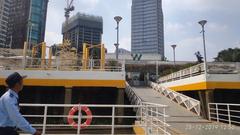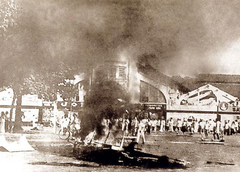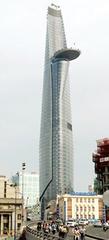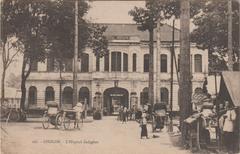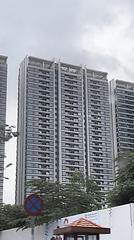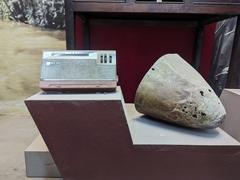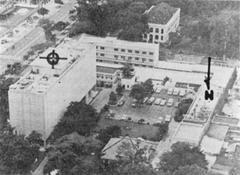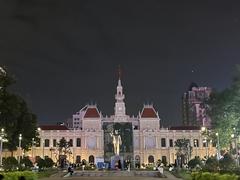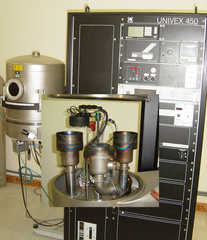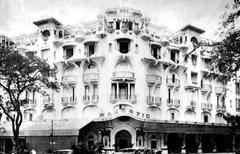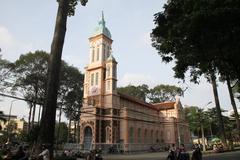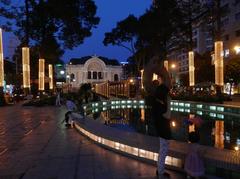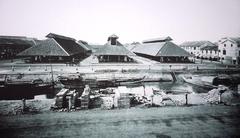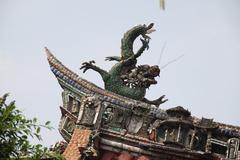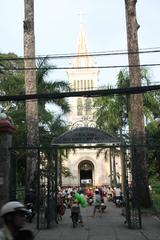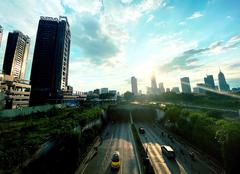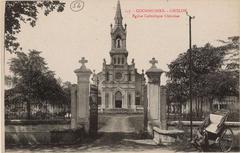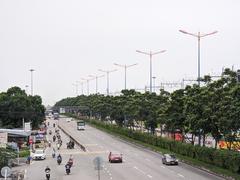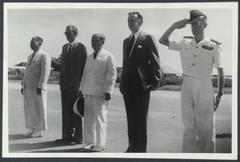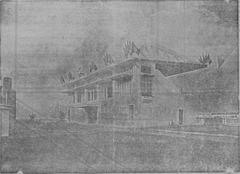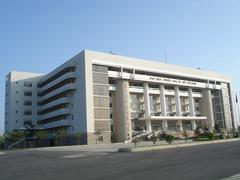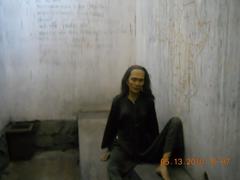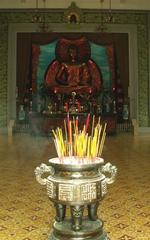Guide to Visiting Chùa Wat Chantaransay, Ho Chi Minh City, Vietnam
Date: 20/07/2024
Introduction
Chùa Wat Chantaransay, a distinguished cultural and religious landmark in Ho Chi Minh City, Vietnam, stands as a testament to the rich heritage of the Khmer Krom community. Established in 1946, this pagoda not only serves as a place of worship but also as a cultural hub preserving the traditions and identity of the Khmer people (source). The pagoda’s architecture, adorned with intricate carvings and vibrant murals, reflects the distinct artistic styles of the Khmer Krom, making it a significant emblem of their cultural identity. Over the years, Chùa Wat Chantaransay has been a sanctuary during tumultuous historical periods, a center for community gatherings, and a beacon of cultural preservation amid the rapid modernization of Ho Chi Minh City. This guide provides a comprehensive overview of the pagoda’s historical significance, visitor information, and travel tips, ensuring that visitors can fully appreciate and respectfully explore this remarkable site.
Table of Contents
- Introduction
- History of Chùa Wat Chantaransay
- Visitor Information
- Preservation and Restoration Efforts
- Modern-Day Relevance
- FAQ
- Conclusion
History of Chùa Wat Chantaransay
Origins and Establishment
Chùa Wat Chantaransay was established in 1946 by the Khmer Krom community, an ethnic group native to the Mekong Delta region. The Khmer Krom people, who practice Theravada Buddhism, sought to create a spiritual and cultural hub in the bustling city, reflecting their rich heritage and religious traditions.
Architectural Development
The architectural design of Chùa Wat Chantaransay is a testament to the Khmer Krom’s cultural identity. The pagoda features traditional Khmer architectural elements, including intricate carvings, vibrant murals, and a distinctive tiered roof. The main hall, or vihara, is adorned with statues of the Buddha and scenes from his life, illustrating key events and teachings. The design serves religious purposes and acts as a cultural preservation effort, showcasing the unique artistic styles of the Khmer Krom people.
Historical Significance
Chùa Wat Chantaransay holds a special place in the history of Ho Chi Minh City and the broader Vietnamese context. During the tumultuous periods of the 20th century, including the Vietnam War, the pagoda served as a sanctuary for those seeking peace and solace. It became a center for community gatherings, religious ceremonies, and cultural events, fostering a sense of unity and resilience among the Khmer Krom and other Buddhist communities.
Role in the Khmer Krom Community
The pagoda has played a crucial role in maintaining and promoting the cultural and religious practices of the Khmer Krom people. It has been a site for traditional ceremonies, such as Pchum Ben (Ancestors’ Day) and Chol Chnam Thmay (Khmer New Year), which are integral to the community’s cultural identity. These events attract not only local worshippers but also visitors from other regions, highlighting the pagoda’s importance as a cultural landmark.
Visitor Information
Tickets and Visiting Hours
Chùa Wat Chantaransay is open to visitors daily from 8:00 AM to 6:00 PM. There is no entrance fee, but donations are welcome to support the maintenance and activities of the pagoda.
Travel Tips
- Best Time to Visit: The pagoda is best visited in the early morning or late afternoon to avoid the midday heat and crowds.
- Dress Code: Visitors are expected to dress modestly, covering their shoulders and knees, as a sign of respect for the sacred site.
- Guided Tours: While there are no official guided tours, local monks and volunteers are often available to provide insights into the history and significance of the pagoda.
Nearby Attractions
While in Ho Chi Minh City, consider visiting other historical sites such as the War Remnants Museum (source), Notre-Dame Cathedral Basilica, and the Reunification Palace (source). These attractions offer a deeper understanding of the city’s rich history and cultural heritage.
Preservation and Restoration Efforts
Over the years, Chùa Wat Chantaransay has undergone several restoration and preservation efforts to maintain its structural integrity and aesthetic beauty. These efforts have been supported by both the local community and international organizations dedicated to preserving cultural heritage. Restoration projects have focused on repairing damaged structures, restoring faded murals, and ensuring that the pagoda remains a vibrant and active center for worship and cultural activities.
Modern-Day Relevance
Key Historical Events
Several key historical events have shaped the development and significance of Chùa Wat Chantaransay. In the early years, the pagoda faced challenges due to political instability and social upheaval. However, it remained a steadfast symbol of resilience and faith for the Khmer Krom community. During the Vietnam War, the pagoda provided refuge and support to those affected by the conflict, reinforcing its role as a sanctuary and community center.
In recent decades, the pagoda has been involved in various cultural exchange programs and initiatives aimed at promoting understanding and cooperation between different ethnic and religious groups in Vietnam. These efforts have helped to enhance the pagoda’s reputation as a beacon of cultural diversity and religious tolerance.
Notable Figures
Several notable figures have been associated with Chùa Wat Chantaransay, contributing to its development and prominence. One such figure is Venerable Thach Chan, a respected monk and community leader who played a pivotal role in the establishment and growth of the pagoda. His efforts in promoting education, cultural preservation, and social welfare have left a lasting impact on the community and the pagoda’s legacy.
FAQ
Q: What are the visiting hours for Chùa Wat Chantaransay? A: The pagoda is open daily from 8:00 AM to 6:00 PM.
Q: Is there an entrance fee? A: There is no entrance fee, but donations are welcome.
Q: Are guided tours available? A: While there are no official guided tours, local monks and volunteers are often available to provide insights into the history and significance of the pagoda.
Conclusion
References
- Visiting Chùa Wat Chantaransay - History, Tickets, and Travel Tips, 2024, Author (source)
- Explore Chùa Wat Chantaransay - Visiting Hours, Tickets, and Cultural Significance in Ho Chi Minh City, 2024, Author (source)
- Visitor Tips for Chùa Wat Chantaransay - Best Time to Visit, Dress Code, and More in Ho Chi Minh City, 2024, Author (source)
